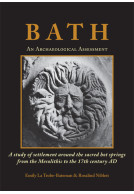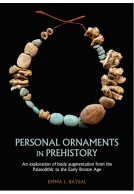Google Books previews are unavailable because you have chosen to turn off third party cookies for enhanced content. Visit our cookies page to review your cookie settings.
Winchester: Swithun's 'City of Happiness and Good Fortune' (Hardback)
An Archaeological Assessment
Imprint: Oxbow Books
Series: Urban Archaeological Assessment
Pages: 416
Illustrations: b/w and colour
ISBN: 9781785704499
Published: 26th May 2017
Script Academic & Professional
Series: Urban Archaeological Assessment
Pages: 416
Illustrations: b/w and colour
ISBN: 9781785704499
Published: 26th May 2017
Script Academic & Professional
You'll be £40.00 closer to your next £10.00 credit when you purchase Winchester: Swithun's 'City of Happiness and Good Fortune'. What's this?
+£4.99 UK Delivery or free UK delivery if order is over £40
(click here for international delivery rates)
Order within the next 3 hours, 13 minutes to get your order processed the next working day!
Need a currency converter? Check XE.com for live rates
(click here for international delivery rates)
Order within the next 3 hours, 13 minutes to get your order processed the next working day!
Need a currency converter? Check XE.com for live rates
This critical assessment of the archaeology of the historic city of Winchester and its immediate environs from earliest times to the present day is the first published comprehensive review of the archaeological resource for the city, which as seen many major programmes of archaeological investigation. There is evidence for activity and occupation in the Winchester area from the Palaeolithic period onwards, but in the Middle Iron Age population rose sharply with settlement was focused on two major defended enclosures at St Catherine’s Hill and, subsequently, Oram’s Arbour. Winchester became a Roman ‘civitas’ capital in the late 1st century AD and the typical infrastructure of public buildings, streets and defences was created. Following a period of near desertion in the Early Anglo-Saxon period, Winchester became a significant place again with the foundation of a minster church in the mid-7th century. In the Late Anglo-Saxon period it became the pre-eminent royal centre for the Kingdom of Wessex. The city acquired a castle, cathedral and bishop’s palace under norman kings but from the late 12th century onwards its status began to decline to that of a regional market town. The archaeological resource for Winchester is very rich and is a resource of national and, for the Anglo-Saxon and Norman periods, of international importance.
Other titles in the series...
Other titles in Oxbow Books...



















